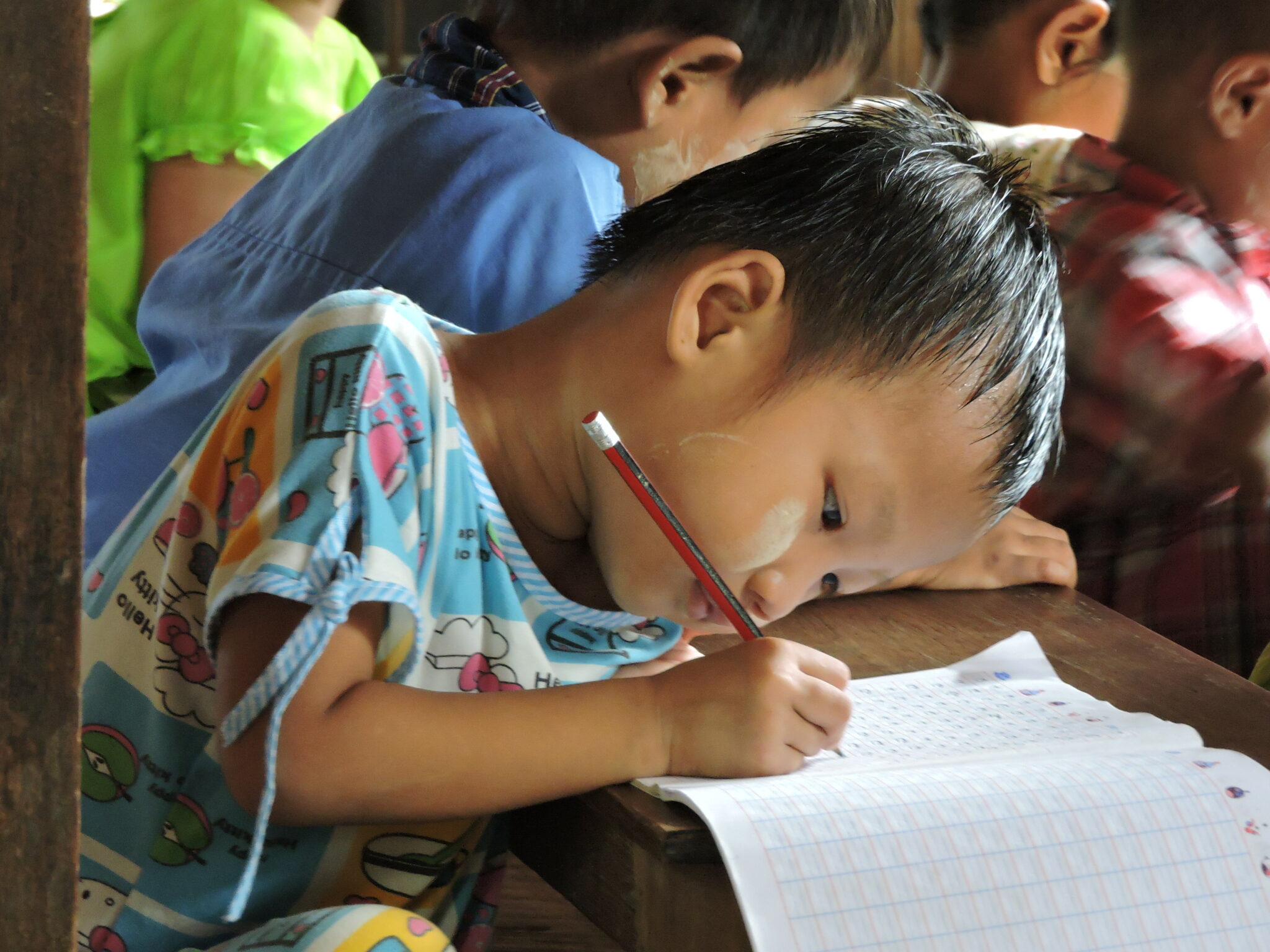Support the Children of Nam Hkai
Full sponsorship
See all sponsorshipsIn the remote village of Nam Hkai, Children of the Mekong help children whose educational opportunities are minimal. Located in the Shan State in the northeast of Myanmar, one of the least developed territories of the country, the village is nestled in the mountains. It takes a two to three hours car ride through hazardous mountain trails to get to the nearest city, Lashio. Isolated and with little infrastructure, the village is particularly poor, and other barriers such as armed conflict and drug problems impede children from pursuing their education. Thanks to group sponsorship, pupils are able to remain in school, which is of paramount importance in such a context.
The Burmese Education System
The geographical location of Nam Hkai, coupled with the particularity of the
Burmese education system, erects numerous obstacles for village children’s education.
With no local school past primary school, parents have to send their children away (if they
can) to pursue their education in one of the nearest cities. The educational path of children
of the Shan State is one of the rockiest within the country education system that left out
many children. According to UNESCO, in 2014, nearly 20% of Burmese children between 6 and 10 years old are out of school after either dropping out or never having been enrolled. By 17 years old, this number increases to around 70%. As per the report, the Shan State’s children are among the most likely in the country to remain out of school. Approximately 37% of people over 15 years old are illiterate, well above the national average of 24%.

Additional Classes

Moreover, the education system is plagued by inequalities. To achieve matriculation (the University Entrance Examination), it has become necessary to take supplementary evening and weekend classes called tuitions. These courses were purely supportive at first but are now an essential part of Burmese students’ education. Professors whose income is insufficient dispense the most significant knowledge during tuition. Without them, pupils cannot pass their exams. Farming, the main source of income for most villagers, provides a wage of 30,000 to 90,000 kyats per month (15 to 45 pounds), and tuitions are thus unaffordable for many families, further widening the educational achievement gap among Burmese youth.
Opium and it's affects in Myanmar

Furthermore, the opium culture that once provided an unexpected source of income also had a destructive impact on many families. Brought by the Chinese who fled the country after their defeat in the Chinese Civil War, Myanmar is currently the second largest opium producer globally. The culture of the poppy was first considered a real opportunity to lift farmers out of poverty. Not only have government efforts to reduce the production of opium jeopardised many villagers’ income, they have also affected many lives in the region. Moving from producers to consumers, numerous villagers have been dedicating their resources and selling their goods (clothes, kitchen utensils, furniture, etc.) to feed their addiction, further impoverishing their families. With over 130 ethnic groups, conflicts between Tatmadaw (Myanmar’s official army) and ethnic groups demanding autonomy as well as between various ethnic groups have always been part of the country’s political landscape. The region of the Shan State has been home to some of the most active armed conflicts in Myanmar. Families and children in the region are greatly affected by robbery, violence, and forced enrolment— each family is forced to provide a member of fighting age, or two if the family is unable to pay the tax claimed by the local armed group—brought by the confrontations. The education system is also a conflict casualties; violence disrupting pupils learning and access to schools.
A £28 monthly sponsorship covers the costs of children’s education in the village. Your sponsorship will also pay for additional courses to ensure the children can pass their exams and all the necessary supplies, such as uniforms, notebooks, pencils, and school books.

